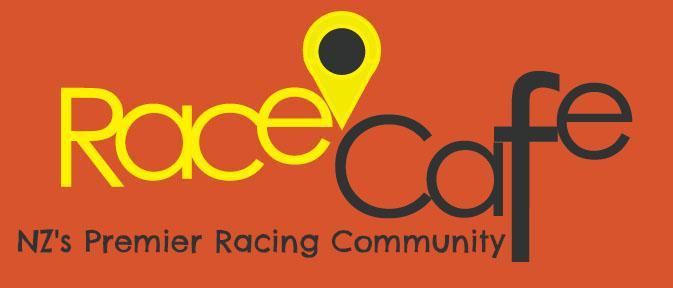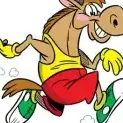-
Latest Posts
-
I see England has the finals nights of All Weather tracks tonight. Newcastle 1st race$NZ200,000, Next for 4, $NZ300,00, Last 2 $350,000. No shying away from synthetic tracks there. Big fields. And Lingfield all races $NZ100,000. Are Tapeta tracks the answer? And what would it cost to convert NZ synthetic to that?
-
Looking through tomorrow night, Addington & Alexandra Park, the race cards are BOTH split roughly half each between TS1 & TS2. What a pain. Thanks Easter 🤣
-
Ah, so I'm not going completely crazy then 🤣 This last 3 years have been taken up more with cancer treatments than keeping up with payout structures, so maybe l missed that change. from the above example it appears 54%-55% may be about the average winning percentage now.
-
It use to be until a couple of years ago clubs distributed stakes at their own discretion. Now it has been standardised. Exceptions are for the likes of slot races & sales series races. I think at one stage some clubs, Addington for example use to do 65%, 20%, 10% & 5%. & no money for 5th or worse. That changed many years ago especially because of the trend to pay something to all starters.
-
By We're Doomed · Posted
Rather uniquely the Yaldhurst AWT season included December. -
By We're Doomed · Posted
Absolute and total arrogance. They persuaded Messara to say Timaru wasn't needed and should be closed down. Now they are too arrogant to even consider they might have got it wrong. Timaru is a crucial track to the SI, being so central. It is just over 4.5 hours from Timaru to Invercargill, and 2 hours to Christchurch. Timaru is also one of the few tracks that hasn't had housing built all around it. And with jumps racing gone for good there is plenty of room to reconfigure the track if necessary. The first thing I would do is build a 1,400m chute. Close to 40 winners trained in and around Timaru so far this season. Timaru should be having money spent on it not be closed down. -
As for J Dunn driving against his own stable runner; it just proves how dodgy harness racing is. Of course, officially, in R & J Dunn, the J doesn't stand for John 🤣
-
YO U WERENT IMPRESSED WITH HES CLASSIC AT PUKEKOHE HOKES? HAD NO RIGHT TO WIN AND ULTIMATELY MOODLEY FOUND A WAY AT THE EXPENSE OF GEORGE SIMON R1 AT 9S ...RACE 4 MAZINO DROPPED OUT EARLY AGAINST THE FAVOURED STABLEMATE AT PUKE RESULTING IN DEFEAT, AT 12S REPRESENTS GREAT VALUE....THE TRACK STATE WILL BE INTERESTING...TAKE THE 108-1 MULTI..
-
By racingoutsider · Posted
What AWT season? We still have no report on the track status and safety issues and more trainers and owners that I have spoken to recently are not willing to run on it. That said, I understand the recent work on it has finally restored it to a decent state for training. -
By We're Doomed · Posted
I'm amazed Ashburton has survived this long. Largely by running 10 horse races. They were happy to hammer Ashburton just to get them through to the AWT season. -
interesting to see the NRLAND THEIR PUPPET JUDICIARY PUSH THE AVERAGE DOGS INTO A 6-0 EARLY SEASON LADDER TOPPER.....THIS TEAM ISNT A FINALS SQUAD UNLESS THE NARRATIVE CONTINUES......THE NRL ARE ALL ABOUT BUMS ON SEATS AND THE QUALITY OF THE GAME SUFFERS WITH CONTINUAL CONTRIVED RESULTS ON THE BACK OF GAMES RIDDLED WITH FORWARD PASSES....CIRCUS.....IF YOU ENJOY BEING ENTERTAINED OVER FAIR PLAY YOU MAY FIND SATISFACTION.....FRAUD
-
I think all recent delays like this - including was it Rosehill recently when they had to transfer from a Saturday to a Tuesday due to weather predictions? - put all of the scratched horses back in. Commonplace.
-
Doing form… Auckland… Again… more scratchings…. How are horses scratched in Thursday races….back in the fields now…. J Dunn not driving stable running …. Bruntwood Brigade must be no show…. Sweet Maggie May….
-
Remember it's a left lunatic so in your eyes it cannot be true you will be pleading with Hokey and Mitey not to believe it. Amazing how the very thing the left accuse everyone else is doing they get caught at the same thing. You do not want to remember Russia Russia Russia the Hillary Clinton paid for fake dossier to discredit Trump. Sorry I forgot you bring it up all the time, I'm now starting to think you maybe the GOAT bullshitter on cafe blaming Trump when you are the guilty one you know how the left work.
-
Of course. You can't hammer tracks and that's what centralisation has caused.
-
AGREE 100% The trouble is: THEY WONT ADMIT THEY THAT PANICTED, GOT IT WRONG, and now the decision NEEDS TO BE REASSESSED.
-
The Family numbers played an important part in Jack's life. Here is an interesting essay to the contrary: Friday Having previously discussed sire-lines and expressed the view that, whilst the battle for dominance between them provides interesting insights into breeding history, they are of no relevance in affecting the racing ability of individual horses, I now turn to the importance of the female line of descent, commonly described as the ‘family’. Various writers of the past have described this as a factor of major importance. Most prominent amongst these was the man whose original research into female-line heredity described the female families from the earliest days of the thoroughbred, the Australian Bruce Lowe, working in the last decade of the 19th century. Lowe identified 43 mares as the ‘tap roots’ of thoroughbred families, and additional tap-roots were later identified for thoroughbreds in the USA, Australia and New Zealand. In recent years genetic research has identified that some of these families stem from the same mare, whilst certain animals believed to come from common families did not, indicating errors at some point in the pedigree records. However, it is probable that all thoroughbreds found today trace in female line to rather fewer than 100 ‘tap-root’ mares. This number is considerably greater than that for the number of distinct male lines (three), because the much more intense selection that is applied to stallions eliminates far more colts from the breeding population. As the author Frank Mitchell put it in his book ‘Racehorse Breeding Theories’: “The male line is the most competitive spot in the pedigree.” Bruce Lowe’s work was of interest in showing lines of descent from ancestral females via their daughters, but he unfortunately went too far by making it the basis of a breeding theory, the so-called ‘Figure System’. Lowe counted the numbers of winners of three English classics (the Derby, the Oaks and the St Leger) tracing in ‘tail female’ line to each of the 43 foundation mares he had identified. He then labelled the families 1, 2, 3 etc. in descending order of the number of Classic winners produced. This was innocuous enough had he not made two leaps of ‘logic’ that he believed would ‘to a great extent revolutionise the present methods of mating thoroughbreds.’ If to any extent they did, it was not for the better. His first assumption was that, because families 1 to 5 had produced the most classic winners in the past, their members were innately superior in some way so that breeders should particularly favour them in looking to produce classic winners of the future. His second was that, because certain characteristics had been found in representatives of particular families in the past, this indicated that the family would also be likely to pass on these characteristics in the future. Accordingly, families 1 to 5 were designated ‘running families’, whereas families 3, 8, 11, 12 and 14 were regarded as best for producing sires. Lowe’s concept was swift to catch on, for as the man who was probably the most rational pedigree analyst of the 20th century, the American Joe Estes, later noted: “It had everything – profundity, mathematics, action, suspense and intricacy; and enough simplicity that there was no one so foolish but that he could grasp the main plot.” Lowe family numbers were quickly incorporated into pedigree records and catalogues, thereby being afforded a prominence that they have lost only in more recent times. However, as well as adherents, Lowe’s Figure System had vehement opponents from the start. These were likely to include any who, in Frank Mitchell’s phrase, applied ‘about 13 minutes of semi-reflective thought on the question of actually using the Figure System.’ The most fundamental problem was that the Figure System considered what had happened in the past, in terms of how many horses of what particular features had stemmed from a particular tap-root mare, but there was no evidence that these results would be at all predictive of what would happen within an individual mating in the future. The mares who founded the ‘most successful’ families had undoubtedly been both prolific and well-regarded at some point in history, so that the thoroughbred population contained many females from their ‘families’. Inevitably these produced more classic winners than the much smaller number of mares from less well-represented families, but it did not mean that an individual mare from Family 1 was any more likely than one from Family 41 to produce a high-class runner. This was demonstrated in the 1930s by Joe Estes, who found that the representations of Lowe’s families amongst Classic winners, the thoroughbred population as a whole, and horses who finished last in moderate ‘claiming’ races were all very similar. Likewise, although certain families might have produced several outstanding stallions in the past (or none), there are relatively few such stallions; and the workings of chance could well produce a clustering of results. However, when some influential breeders gave credence to Lowe’s ideas, certain stallions became in danger of being discriminated against because they did not come from ‘stallion-producing’ families. Cyllene, sire of four Derby winners and grandsire of Phalaris, was exported to Argentina in part because he came from the ‘wrong’ family number, 9. Luckily for the Argentinians they didn’t seem to be aware of this particular problem, for Cyllene proved to be a major influence in that country too. As another outstanding turf writer, Joe Palmer, wrote, with just a scintilla of irony: “The monumental work of Bruce Lowe should be at every breeder’s fingertips, and a careful application of its principles will enable him to avoid such stud failures as Cyllene (9), Fair Play (9), Star Shoot (9), Fairway (13), Highflyer (13) and others, these being from families which do not produce either sires or racers.” Since then, one could add Galileo (9), Nasrullah (9), Mr Prospector (13) & Pharos (13) to a similar list of failures – or else classify families 9 and 13 as good for producing stallions too; whilst St Simon (1), Frankel (1), Northern Dancer (2), Deep Impact (2), Nearco (4), Hail To Reason (4), Sadler’s Wells (5) and Native Dancer (5) suggest that fairly good sires can come from the ‘running families’ as well. For most of today’s breeders ‘Bruce Lowe Family Numbers’ are merely of academic interest, if they are of any interest at all. The term ‘family’ is far more likely to refer to a well-known mare of more recent years, who along with her daughters and granddaughters has been responsible for the production of significant numbers of high-class runners. Determining just who is the ‘foundation mare’ of a family is then a matter of opinion, since in many cases the dam or granddam of the mare that is now regarded as such was herself a successful producer. For example, Rough Shod, whose family was developed with great success in the USA, was a granddaughter of Simon’s Shoes, who 50 years ago was herself regarded as the matriarch of a prominent family. In turn, she and other mares once recognised as the founders of important families are themselves being challenged for primacy within their own families by daughters or granddaughters. In the case of Rough Shod this could be her granddaughter Special (dam of Nureyev and granddam of Sadler’s Wells & Fairy King); whilst another modern ‘tap-root’ mare Almahmoud (with daughters who bred Northern Dancer as well as twice US leading sire Halo and French champion sire Arctic Tern) is in turn being challenged by her own daughter Natalma, who as well as Northern Dancer produced the granddams of Danehill and Machiavellian. Surely, repeated such ‘internal’ challenges reinforce Bruce Lowe’s suggestion of a permanent superiority of certain families - but is this really the case? The process for the recognition of a modern family is that a successful broodmare produces several offspring that prove to be high-class racehorses, both colts and fillies. The fillies are retired to stud and in turn several of these achieve significant success; the process then continues with their daughters. This produces a kind of ‘explosion of talent’, whereby numerous successful animals are found to trace in ‘tail female’ to a single mare a few generations back, and they are then recognised as belonging to her ‘family’. However, in most explosions the effect is likely to diminish with distance, in this case with the passing of generations. Does this happen with thoroughbred ‘families’ too? ‘Super-Mares’ and Successful Families The appearance of what appear to be ‘super-mares’ has been seen regularly over the years, such as Pocahontas (dam of the champion sires Stockwell & King Tom and champion broodmare sire Rataplan) and Lily Agnes (dam of Triple Crown winner Ormonde and grandam of Sceptre, winner of four Classics) in the 19th century. More recently, Scapa Flow (dam of the leading stallions Pharos & Fairway, along with 1000 Guineas winner Fair Isle) and Selene (dam of the 6-times champion sire Hyperion, as well leading US sire Sickle and successful stallions Pharamond & Hunter’s Moon), born early in the 20th century, seem to fall into the same category, along with the likes of Almahmoud (pictured below) and Rough Shod already mentioned. This phenomenon has been seized on by some as evidence that the mares in question possess such innate genetic superiority that making special efforts to incorporate their names in pedigrees, or to inbreed to them, would greatly increase the chances of success. The Australian ‘pedigree consultant’ (a phrase that I must admit causes me to grimace inwardly whenever I encounter it), Ken McLean, was a strong proponent of the importance of such mares, suggesting that inbreeding within their pedigrees may have ‘induced spontaneous favourable mutations which are passed on.’ Unfortunately for this proposal, this is genetic gibberish; nothing in genetic theory suggests that inbreeding is responsible for inducing mutations, favourable or otherwise – it merely increases the likelihood of genetic homozygosity, of which the effect will depend on whether the genes in question are beneficial or otherwise. The American Marianna Haun formulated her own theory of the benefits of a female mode of inheritance based on the X chromosome possessed in double-dosage in all females, but only in combination with the Y chromosome in males. This was that a gene for developing a large heart, potentially giving beneficial effects in athletic ability, may reside on the X chromosome that males can only inherit from their mothers and pass on to their daughters. Giving remarkably little evidence for either the existence of such a single gene or its mode of inheritance, she wrote two books on ‘The X Factor’ suggesting which horses had inherited large hearts from which ancestors - so that breeders could use such data to breed horses with large hearts themselves. Mmm... The key question raised by such speculations is whether there is any evidence that a form of heritability based solely on the female line provides significant advantages to breeders relying on it? Evolution of the Families of Outstanding Broodmares Earlier we talked about the ‘explosion of talent’ that appears to be produced by certain successful broodmares, but wondered whether, like other explosions, the effect diminishes with distance, in this case with the passing of generations. If so, there may be no mysterious genetic factor underpinning the development of a new family; it may simply be due to ‘opportunity’, with weight of numbers driving its apparent success once a ‘foundation mare’ has proven her ability as a producer. To investigate this without going back over hundreds of years and vast numbers of generations, I first looked at the development of the families tracing to Almahmoud (born in 1947) and Rough Shod (1944). The former’s family developed through her daughters Natalma, Cosmah and Bubbling Beauty (respectively the dams of champion sires Northern Dancer, Halo and Arctic Tern); whilst Rough Shod’s family comes down via her US Horse of the Year Moccasin, the latter’s stakes-placed sister Thong, and their sibling, the stakes winner Gambetta, as well as two less successful daughters. As outlined below, in addition to Northern Dancer and Halo, such outstanding sires as Danehill, Machiavellian, Nureyev and Sadler’s Wells have been produced by these families. Below shows the Numbers of Stakes Winners in the first four generations descended from Almahmoud and Rough Shod respectively. Family: Almahmoud: 1st Generation: 2, 2nd Generation: 9, 3rd Generation: 18, 4th Generation: 54. Rough Shod: 1st Generation: 4, 2nd Generation: 13, 3rd Generation: 16, 4th Generation: 36 The numbers of high-class animals descended from each mare increase rapidly as more generations of runners are produced. This might easily convey the impression of the aforementioned ‘explosion of talent’, and that the ability evident in many offspring of the foundation mare and her daughters continues to be a general feature of most members of the family. However, when the Percentages of Stakes Winners to named foals are plotted by generation, a very different picture emerges, as shown here. Family: Almahmoud: 1st Generation: 25%, 2nd Generation: 22%, 3rd Generation: 10%, 4th Generation: 8%. Rough Shod: 1st Generation: 36%, 2nd Generation: 39%, 3rd Generation: 13%, 4th Generation: 8% Results for the first and second generations (foals produced by the foundation mare and her daughters respectively) are similarly impressive, but this is not at all surprising since it is these results that first called attention to the mare as the prospective source of a new ‘family’. However, the percentages of stakes winners fall dramatically after this, with the third generation producing less than half the ratios generated by the first and second; whilst figures for the fourth generation are merely in line with those produced by numerous good stallions. Some outstanding broodmares are found in later generations of the families of both Almahmoud and Rough Shod. For example, Rayzana (dam of Danehill) and Coup de Folie (dam of Machiavellian) are great-granddaughters of Almahmoud via Natalma; whilst Nureyev’s dam, Special, and Sadler’s Wells’ dam, Fairy Bridge, are respectively granddaughter and great-granddaughter of Rough Shod via Thong. However, these are fairly isolated examples of high-class producers in their generations of the family. Significant talent may have passed down to them from Almahmoud / Natalma, or Rough Shod / Thong, but others similarly descended were not so fortunate. Below indicates just how rapidly a successful family can expand. It shows the Numbers of Named Foals in the generations following Almahmoud and Rough Shod. The expansion is unsurprising, for in the early generations of a successful family most of the fillies are considered to be valuable breeding animals and so are retained for stud. Family: Almahmoud: 1st Generation: 8, 2nd Generation: 41, 3rd Generation: 179, 4th Generation: 675. Rough Shod: 1st Generation: 11, 2nd Generation: 33, 3rd Generation: 123, 4th Generation: 424 The enormous expansion of numbers within even a few generations of the ‘founding’ of a family casts light on a phenomenon often discussed by pedigree writers, namely the apparent comeback of a family after it has lain dormant for a period, implying some mysterious genetic effect giving hope to owners of distant descendants of a great mare. The likelihood is that it is simply caused by statistical probability rather than some reawakening from dormancy, as in the cases of Rayzana and Coup de Folie referred to above. Over 500 fillies were produced in tail-female by the fourth generation of Almahmoud and Rough Shod’s descendants. There may be over 1,000 potential broodmares in the next generation; it is virtually inevitable that some will produce good horses. Now let’s look at whether the families of two outstanding broodmares born around 40 years after Almahmoud and Rough Shod are developing in the same way. These are the Arc winner Urban Sea (born in 1986 to another outstanding broodmare, Allegretta), dam of eight Black-Type Winners (BTWs) from 11 foals (including Galileo & Sea The Stars); and Coup de Folie (1982), a Group 3 Winner (G3W) from Almahmoud’s family, who from 12 foals produced 5 BTWs and 3 G1Ws, the latter including the very good sire Machiavellian and the mare Coup de Genie. Below shows the figures for family members born up to and including 2021: Urban Sea 1st Generation: SWs: 8, %SWs: 73%, Foals: 11. 2nd Generation: SWs: 10, %SWs: 29%, Foals: 35. 3rd Generation: SWs: 7, %SWs: 19%, Foals: 37. 4th Generation: SWs: 1, %SWs: 4%, Foals: 24. Coup de Folie 1st Generation: SWs: 5, %SWs: 44%, Foals: 12. 2nd Generation: SWs: 8, %SWs: 13%, Foals: 61. 3rd Generation: SWs: 12, %SWs: 7%, Foals: 168. 4th Generation: SWs: 13, %SWs: 6%, Foals: 217. Here, although numbers in the third and fourth generations have not reached their final values, the pattern found with Almahmoud and Rough Shod is being repeated: there are increasing numbers of foals in each generation but weaker results, Whilst for Urban Sea the 2024 Group 1 winner Twain will improve 4th generation statistics when foals of 2022 are included - perhaps even generating mention of the importance of his membership of her family should he win a Classic – the level of success of this generation is likely to remain well below those of earlier ones. In addition to the four mares covered in depth, a number of other outstanding broodmares have names of such resonance that their presence in the tail-female line of a successful racehorse would probably lead to discussion of their family’s ‘coming back to life’ (to date, none have produced any different pattern in subsequent generations than did the above mares). Should this happen, then instead of such a ’genetic reincarnation’, factors much closer to home, in terms of the quality of the parents and grandparents of the animal concerned, are likely to be far more important. Opportunity and weight of numbers, rather than some mysterious reawakening, are the reasons why well-known families sometimes produce good racehorses after some generations of indifferent results. So, regrettably for those looking for some elixir of breeding (though not for those simply looking for logic), my conclusion is that consideration of a broodmare’s family beyond the first couple of generations is not likely to be the key to success. We must continue to look elsewhere, which I hope to do in due course if my efforts for GMB so far do not cause me to be cancelled.
-
Like & Follow Us on Facebook
-
RaceCafe News
-
Featured Video
-
Topics
-
Disclaimer
While the owners and managers of RaceCafe endeavour to moderate and control the site and posts on it, they give no guarantee that posts are true and correct, and take no responsibility whatsoever for what individuals post on the site.
Posts do not necessarily reflect the sentiments, views or beliefs of Race Cafe or its owners and management.
The owners and managers of RaceCafe reserve the right to remove posts from the site and to provide details of members whose posts warrant scrutiny.


 RaceCafe News
RaceCafe News

.thumb.jpeg.8b519ff20c4588a11f4d6d465b34743f.jpeg)